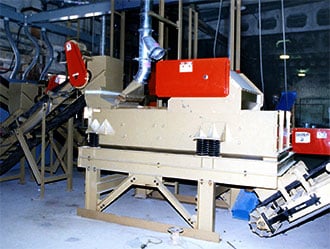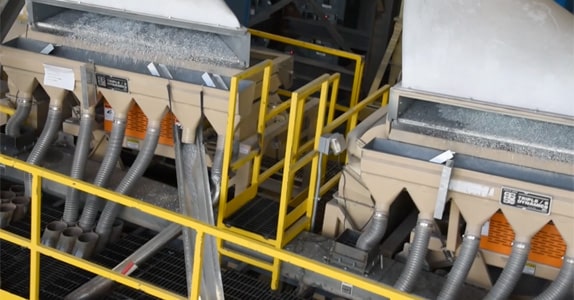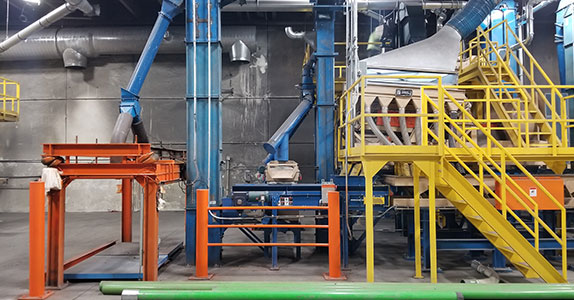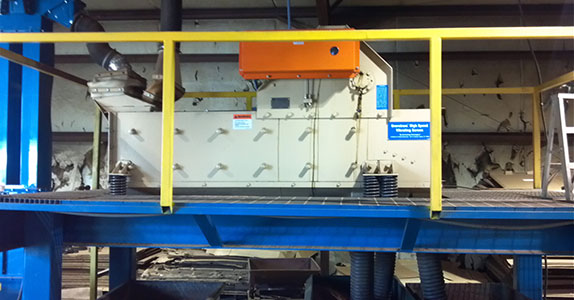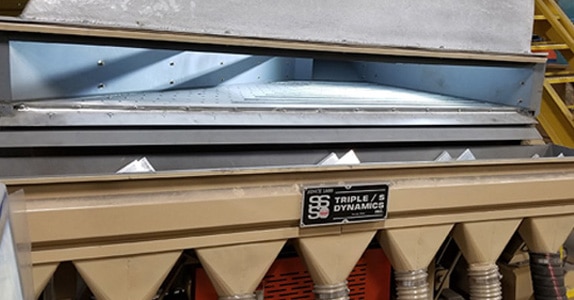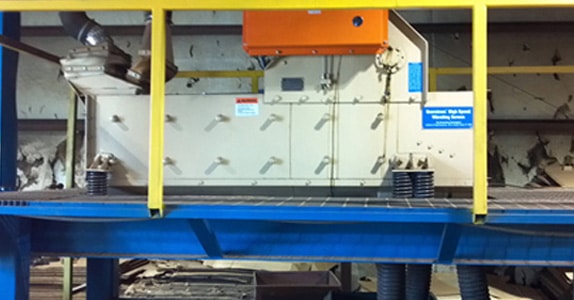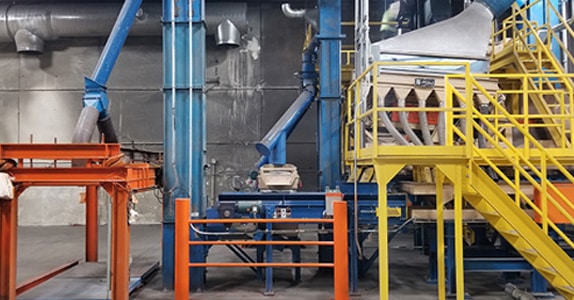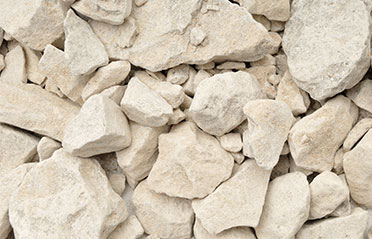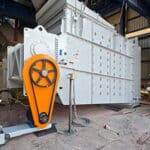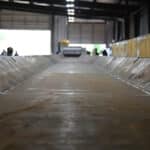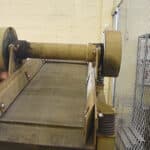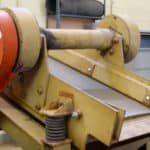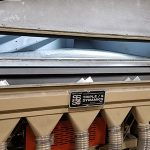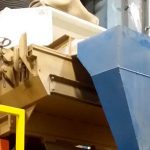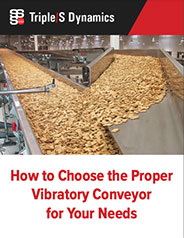All-New Production Line for...
High-Speed Vibrating Screens
High-Speed Vibrating Screens come in a variety of models, sizes, configurations and accessories for wet and dry screening. Screens may be inclined or horizontal, open or enclosed, customized from a variety of screen media and accessories. Speeds and amplitudes will be optimized for the application, within a range of 0.100 in. to .500 in. total amplitude, at frequencies selected to produce peak acceleration between 4 and 6 g’s. Deck slope, also optimized for your application, will range from 11 deg. to 20 deg. In single, double or triple-deck models, screen sizes go up from 3 ft. x 6 ft. to 8 ft. x 20 ft.
High-Speed Screening Applications
Some typical applications include:
- Fine mesh sizing of a mixture of granulated copper wire and insulation prior to air separation. The horizontal screen is preferred over the inclined for precision sizing.
- Washing silica sand
- Aggregate screening, coarse and medium size
- Limestone
- Barite ore
- Meat dewatering screen
- Coal, petroleum coke
- Lithium Ion Battery Recycling
Inclined Vibrating Screens
Inclined screens are vibrated by a single, two-bearing, unbalanced rotor mounted concentrically or eccentrically with respect to the centroidal axis of the screen. Overhead-mounted rotors, designated “OHV”, generate a slightly rocking motion. The forward-inclined ellipse at the feed end accelerates incoming material to promote initial screening while the slightly backward-inclined ellipse at the discharge retards the oversize travel rate to help in the final removal of near-size particles.
Concentrically-mounted rotors generate a uniform circular motion over the length of the screen, from feed to discharge, moving oversize material smoothly at a uniform rate. Inclined screens with concentric rotor mountings, designated “CV”, are less susceptible to blinding in coarse screening of acicular or “spikey” particle shapes than units with overhead mountings.
Incline vibrating screens offer lowest cost per ton hour, and can handle heavy oversize burdens, at somewhat compromised precision in sizing compared with the horizontal. T/SD inclined screens are made in sizes ranging from 2’ x 4’ to 10’ x 24’. Speeds and amplitudes can be field-adjusted to optimize performance.
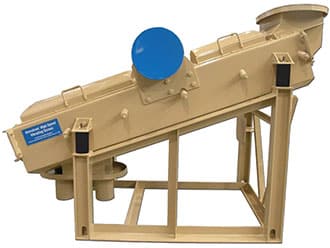
Horizontal Vibrating Screens
Horizontal vibrating screens are available in the same sizes as the equivalent two-bearing inclined models. A pair of gear-coupled, parallel-shaft unbalanced rotors in an enclosed full-width vibrator module applies the straight-line inertia force that generates the receiptrocating motion of the screen box. The module is mounted so that its line of action passes through the center of gravity of the screen box, which moves in a straight-line, reciprocating pitching motion that conveys as it screens. This contrasts with the circular motion of the inclined screen, which depends on its downward slope to move the retained material over the screen.
The vertical components of the vibrating motion expands the oversize material bed to create extra voidage through which the undersize rapidly settles and finds its way to the screen openings. To control its tendency to produce a “landslide” effect, the inclined screen is limited to lower maximum amplitudes than the horizontal. The greater amplitude required to propel the retained material over a horizontal surface improves stratification, and because the material can’t roll or slide on the level surface, the horizontal screen is generally considered to be more efficient than the inclined.
